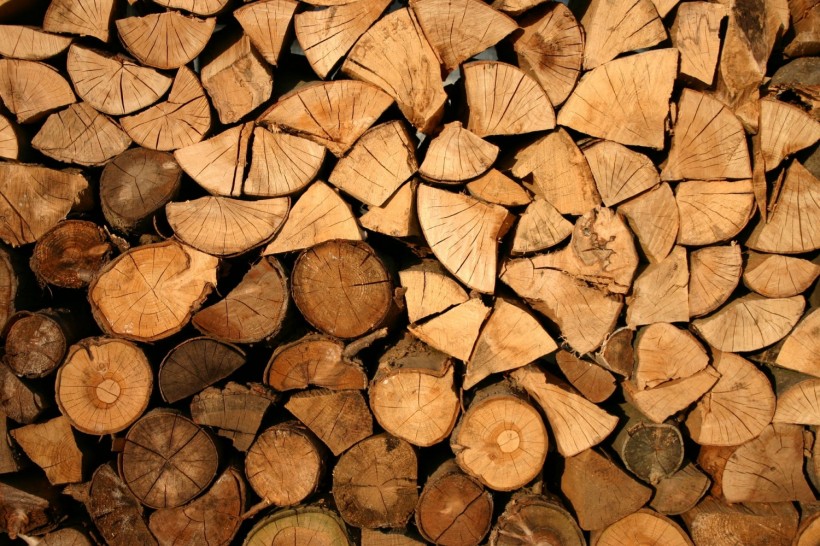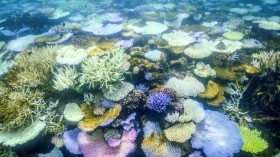The study of the Earth's interior has been intensified by the desire to extract its hidden resources for economic gain, especially the search for hydrocarbons to fuel the rapid growth of the world's economy. In the USA alone, over 1.1 million active oil and gas wells are currently producing. Most of that number have probably been logged, and that provides a very large sample of the interior of the earth beneath our feet. Admittedly, most of those wells are concentrated in producing trends populated by fields that produce from a given geologic setting that characterizes that trend, but there is another large population of wells that encountered no production near and around those trends but were also logged. Therefore, all the wells drilled in pursuit of energy reserves, including the methods developed for finding and producing those reserves, have provided us invaluable information about the Earth's interior from the crust where all the wells have been drilled even down to the inner core where no wells can be drilled (at least for the foreseeable future).
The drill bit and the tools developed for measuring and analyzing the rocks encountered have given us a detailed look at the orientation and distribution of the formations and the fluids they contain as well as helped develop remote sensing strategies that can help uncover the secrets of the interior that can't be directly observed or measured. With the advent of robotic exploration of our neighboring planets, these strategies can also help guide our efforts to observe and measure the processes in operation on other planets. Therefore, a brief description of borehole logging technology (such as from Mount Sopris Instruments) seems warranted at this time.
The pioneer well logging technology was the invention of electric logging by the French company Schlumberger in 1927. It measured the resistivity of the formations encountered, but the discovery in 1931 of a spontaneous potential effect created by the interaction of the drilling muds and permeable beds led to combining the two measurements together on a single log, enabling drillers to differentiate between oil producing, permeable beds and non-producing, impermeable ones. No longer did the driller have to let the well turn into a gusher, flooding the area around the well with an ocean of oil, to signal his discovery. Now he could maintain enough mud weight in the hole to contain the oil in the formation and allow the electric log to determine the results of his drilling. It was an advancement that saved money as well as protected the environment.
Advances in well logging technology increased the reliability and precision of borehole measuring instruments. In addition to resistivity and spontaneous potential measurements, which were modified in the 40's to measure the direction and dip of the formations encountered, induction logs were developed in 1948 to use with oil-based drilling muds that were not conductive by creating magnetic fields that in turn induced magnetic fields in the rocks that induced a new current that reflected the rocks resistivity. Acoustic/Sonic logs measure the seismic velocities of the rocks in the borehole that help determine the different rock layers, their porosities, and their contacts, a process very similar to seismic imaging.
Radioactivity/Gamma Ray logs measure the in-situ radioactivity of the formations to differentiate between shales which are normally radioactive from other rocks which are not. Hard-to-produce oil and gas reserves being developed today from these resources has helped the USA to gain energy independence and become a net exporter of oil and gas. Nuclear magnetic resonance logs, just like medical MRI, excite the hydrogen in the pore fluids in the rocks to determine type (oil, gas, or water), volume and viscosity of these fluids. After completion of a well, corrosion well logging is conducted regularly to assess the condition of the casing and tubing. Various non-invasive tools include ultrasonic waves and magnetic or electromagnetic transducers.
Borehole imaging logs that produce detailed images of the sides of the hole are of particular value because of the detailed information that is obtained to help assess the reserves present and the expected rates of production, especially if the latter can be accelerated. These measurements can be optical, acoustic, or electrical, and even a combination of acoustic and electrical. Optical images are produced by cameras that take high-definition color images of the side of the borehole. Acoustic images are produced by ultrasonic signals that penetrate through the drilling mud to provide a picture of the formations on the sides of the wellbore. Electrical imaging is produced by alternating current energy interacting with the resistivities of the rocks in the borehole.
The methods for obtaining well logs include wireline logs, measurement while drilling logs, mud logs, gas logs and core logging. Wireline logs are obtained after drilling has ceased by logging instruments lowered into the hole by a wirelines that sends the signals up to the surface for recording. MWD logs are obtained during the drilling operation and can show the formations before the mud has penetrated into them. Mud logs are obtained at the surface when cuttings from the formations reach there as the drilling muds circulate through the hole. Gas logs measure the gas content of the drilling fluids and their origin, whether from the formations encountered, the primary objective, or from contaminate gas introduced during drilling, or from recycled gas. Finally, core logging brings portions of the rock penetrated by the wellbore up to the surface for analysis, either as whole cores or sidewall cores.
Well logging technology has progressed rapidly since the end of World War II because of the sustained economic growth fueled by hydrocarbon-based energy resources. Although changes toward the use of sustainable energy resources are being aggressively advocated and pursued, our oil-based system cannot be completely abandoned during the transition. Well logging techniques need to be refined and strengthened to make the exploration and development of hydrocarbon resources both efficient and more environmentally safe, as well as providing techniques for better robotic exploration of neighboring planets.
© 2024 NatureWorldNews.com All rights reserved. Do not reproduce without permission.
* This is a contributed article and this content does not necessarily represent the views of natureworldnews.com


![Microplastics Escape Body's Gut to 'Infiltrate' the Brain, Kidneys and Liver [Study]](https://1471793142.rsc.cdn77.org/data/thumbs/full/70195/280/157/50/40/microplastics-escape-bodys-gut-to-infiltrate-the-brain-kidneys-and-liver-study.jpg)



